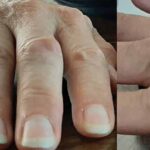“Currently this test can be used to increase physician confidence of a diagnosis of RA in patients with UA and/or symptoms suggestive of RA and a short duration of symptoms,” Dr. Filer told Reuters Health by email. “The presence of ECU or any finger flexor tenosynovitis increases the odds of subsequent RA 6.6-fold in unselected patients regardless of anti-CCP positivity, and 4.8-fold in patients seronegative for anti-CCP.”
“This work is part of a series of studies with the UK Birmingham Early Arthritis Cohort (BEACON) that will ultimately generate weighted algorithms incorporating subclinical joint and tendon disease measured by ultrasound to aid in the clinical diagnosis of RA and other persistent arthritides in early arthritis clinics (see Filer et al Ann Rheum Dis 2011),” Dr. Filer added.
“In the BEACON cohort we recruit patients with arthritis of less than 3 months’ symptom duration, when disease is frequently undifferentiated, but the benefit of treating RA is at its greatest (van der Linden et al Arthritis Rheum 2010): a real diagnostic problem for rheumatologists,” he said. “Previous data on tenosynovitis has focused on MRI, which is not accessible for most clinicians as a modality to aid in determining early treatment.”



